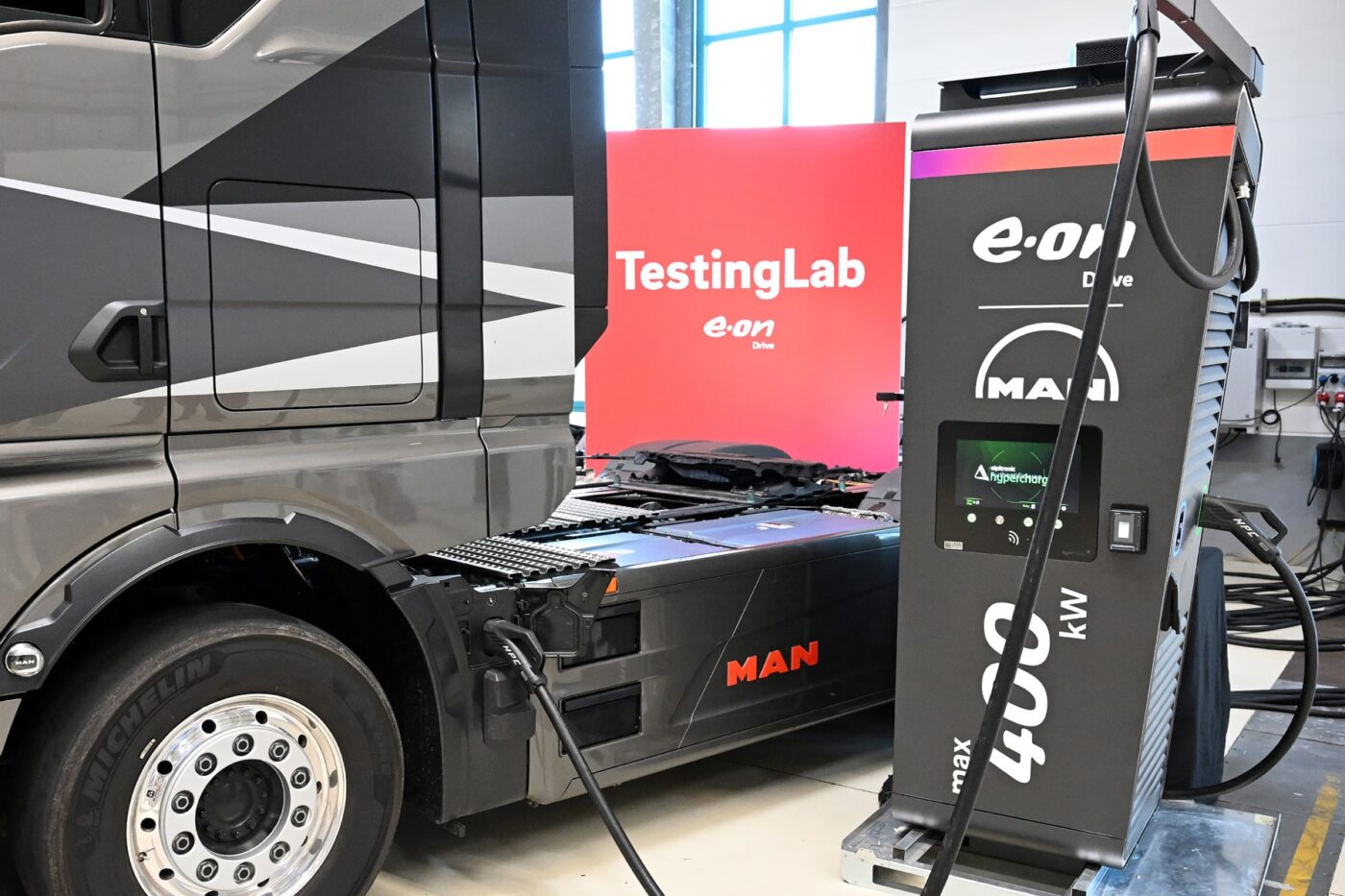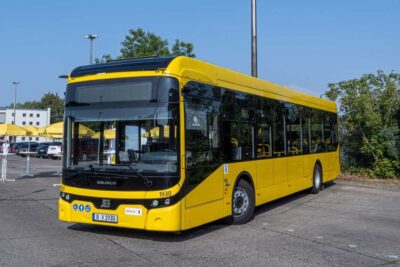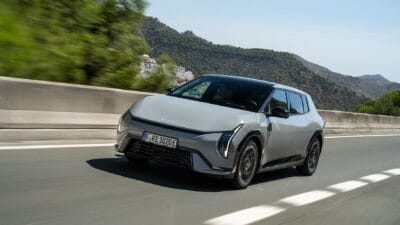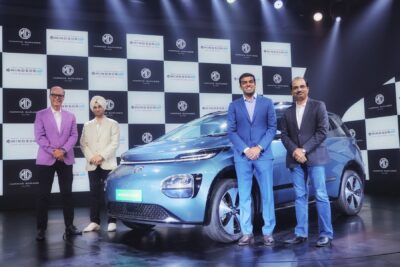E.On and MAN to expand truck charging infrastructure in Germany
With the publicly accessible electric truck charging network, the two companies say they want to make an “important contribution to achieving the emission targets for heavy commercial vehicles as well as for sustainable logistics and green supply chains”. Although the 170 locations are planned throughout Europe, the focus will be on Germany: 125 sites are to be built in this country, according to E.On. This means that around 73 per cent of all sites will be concentrated in one country. E.On and MAN are also building further sites in Austria, the UK, Denmark, Italy, Poland, the Czech Republic and Hungary – although an exact distribution has not yet been announced.
However, it is clear where the charging stations are to be built: They are to be “built along the existing MAN service network”, but will still be accessible to commercial vehicles from other manufacturers. We are talking about “strategically selected MAN service bases”, primarily in industrial areas with high truck volumes or near motorways. This should allow public charging to be “easily integrated into everyday operations”.
In order to make the charging points accessible for heavy (and correspondingly long) commercial vehicles, the locations are to be designed according to the drive-through principle – trucks and buses should therefore not have to manoeuvre, but can (in theory) simply drive next to the charging station. While the position of the charging port on the vehicle is standardised in the upcoming MCS for electric trucks in order to standardise the structure of the infrastructure, this is not the case with today’s CCS connections. The locations must therefore be designed in such a way that charging is also possible if the charging port on an electric truck is located near the driver’s door, for example, and at the rear of an electric bus. “To ensure public accessibility regardless of the respective vehicle brand, the charging stations are installed in separate areas from the MAN service centres wherever possible – with separate entrances and exits for the charging area. During the day, drivers also benefit from the existing infrastructure such as sanitary facilities and recreation rooms,” the two companies wrote.
Speaking of CCS and MCS: In principle, the lorry charging network will be set up with 400 kW CCS charging points. According to the press release, this should be enough to recharge electricity for a range of 300 kilometres in 45 minutes. “A later conversion of the locations to the MCS megawatt charging system is planned,” said the partners. However, a time frame for this is not specified. In principle, 80 of the 170 locations should be in operation by the end of 2025. The target date by which all 170 locations will be available is also not yet specified.
The rollout of commercial vehicle-compatible charging infrastructure is picking up speed with the new cooperation between MAN and E.On. Through the Milence joint venture, MAN – in the form of its parent company Traton – is already active together with Daimler Truck and the Volvo Group in the area of high-speed lorry chargers. The target here is 1,700 charging points. The MAN eTruck, which is already available to order, will soon complement the MAN portfolio with a heavy-duty electric truck for long journeys. The vehicle should enable “daily ranges” of up to 800 kilometres, with a charging stop already factored in. And the electric MAN Lion’s City E city bus is set to receive an update next year – and a longer range.
The political goals for decarbonising transport in Germany and Europe are clear: the German government wants to reduce greenhouse gas emissions from heavy road freight transport in Germany by 55% by 2030 and be climate-neutral by 2045. The EU recently agreed to reduce CO2 emissions from heavy goods vehicles by 65 per cent by 2035 and by 90 per cent by 2040 compared to 2019.
According to E.On CEO Leonhard Birnbaum, this EU-wide reduction of 90 per cent is one of the main drivers for the project. This is because electromobility is “a central key” to achieving this goal. “We are investing massively to give the infrastructure for electric heavy goods transport a decisive boost and to set the course for sustainable logistics and green supply chains,” says the manager. “Almost all major manufacturers are now focussing on electromobility in their developments. For the final breakthrough, we need a nationwide, high-performance charging infrastructure that is designed with Europe in mind from the outset. We are delighted to be leading the way here together with MAN.”
MAN CEO Alexander Vlaskamp believes that around 50,000 charging points for heavy commercial vehicles are needed in Europe by 2030. “As a manufacturer of electric trucks, we are of course making our contribution to this. I am delighted that with E.ON we now have a strong partner at our side for the electrification of our service locations,” says Vlaskamp. “We are thus laying another foundation stone for a public charging network. However, we still urgently need the support of politicians for its large-scale expansion.”





0 Comments